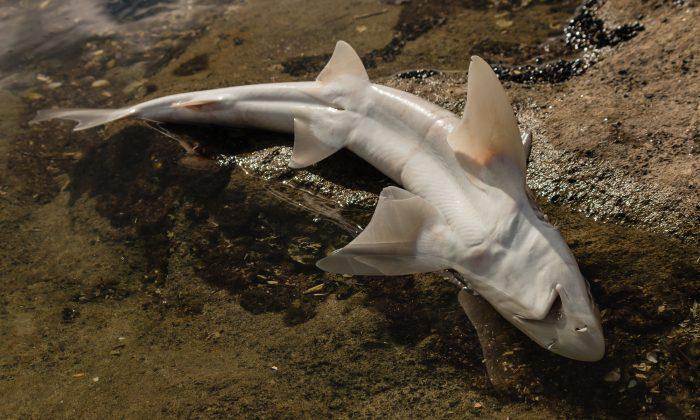What’s been going on in our oceans? A very strange phenomenon that only happens in horror movies had been taking place on the Gansbaai beaches in South Africa.
The fourth great white shark was found washed up dead along the coastline of South Africa with its liver “precisely” removed back in May 2017. In the other two cases, the man-eating sharks had their hearts missing as well even though the rest of their bodies remained untouched.
The Dyer Island Conservation Trust team, led by biologist Alison Towner, carried out the autopsy on the carcasses.
According to a
Facebook post by Marine Dynamics—a conservation body that runs shark-cage diving trips—this fourth documented deceased male great white shark measured 13.5 feet (4.1 m) in total length.
“He was missing his liver, testes, and stomach. The carcass may be a few days old but it seems relatively fresh and bled out massively. All necessary samples have been taken for the various scientific projects,” Marine Dynamics
wrote.
“This is the fourth documented deceased white shark since May that we can connect to Orca predation,” said
Towner.
The fearsome great white shark has no known natural predators other than the orca (killer whale)—on extremely rare occasions.
“Those that say [great white] sharks are apex predators, that’s not the case,” George Burgess, director of the International Shark Attack File at the Florida Museum of Natural History, told
Gizmodo. “As hard as it is to say it, the killer whales are a step above.”
Marine biologists who have been examining the carcasses confirmed this unusual predatory pattern was the work of the agile orcas in the area.
“The pair of Orcas believed to be responsible were sighted offshore of Danger Point then again in Franskraal today,” Marine Dynamics
explained. “Marine Dynamics cage diving boat tracked the pair. Subsequently all cage diving boats failed to see white sharks today and it is believed the sharks may have fled the area once again.”
Experts say orcas, known to be one of Earth’s most cunning predators, have developed an appetite for the liver, which is rich in a natural organic compound called squalene. This type of selective feasting on livers is very rare in orcas though.
“Obviously this is a very sad time for us. Nature can be so cruel but the dexterity with which these killer whales are capable of is mind blowing – almost surgical precision,” Towner wrote on
Facebook. “That is the way in which they have removed the squalene-rich livers and dumped the shark carcass. We have never seen anything like this before in great white deaths.”
No one is certain as to how the orcas are able to extract the liver from the great white sharks so neatly and precisely. Instead of ripping their prey apart, it is believed the orcas bite the great white sharks near their pectoral fins before squeezing the liver out through the gaping wounds.




